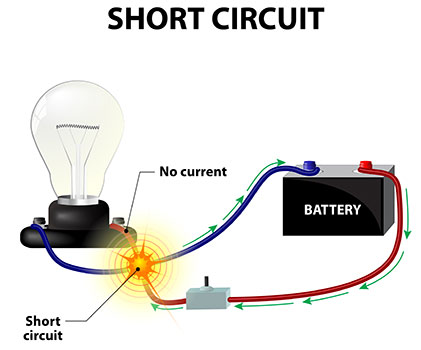Learn

Parallel Circuits
To begin, watch GPB Segment H: Parallel and Complex Circuits. You only need to watch the first 6:26 of this video.
A parallel circuit contains two or more paths for current to flow through.
- The voltage is the same across each component.
- The total current is the sum of the current in each path.
- Parts of a device in parallel can be turned on or off separately.
In a parallel circuit, the current can run through all branches that are connected together. Using Ohm's law, we know that the current is greater through the branches that have lower resistance.


Read Parallel Circuits on the Physics Classroom and complete the following:
- Check Your Understanding Questions
- Practice Questions
If you'd like more review, complete Parallel Circuits by reading the section and completing the two Drag and Drop Activities to build different parallel circuits.

Uses of Parallel Circuits
Most things that require electricity are wired in parallel circuits. For example, houses are wired in parallel. Just imagine if your home was wired in series circuits:
- All the lights in the house would have to be on at the same time.
- If you turned one off, all the lights would turn off!

A short circuit diagram.

Resistance
A parallel circuit is different than a series circuit. In a parallel circuit, there are multiple pathways, which the current can flow through. The current will split to go through each of these pathways instead of being the same throughout the circuit (like in a series circuit). Voltage will be the same across each of the different pathways.
This means that the voltage does not have to be split across the different resistors (like in a series circuit). And, because the resistors are each connected on their own pathway, the total resistance of a parallel circuit is equal to the inverse of each resistance added together. Written as an equation it looks like this:

You don’t need to be able to perform calculations with this equation but what you should realize is that the total resistance of the entire circuit is actually LESS than the least resistance. This makes the bulbs in a parallel circuit often light brighter than in a series circuit.
However, because the voltage from the battery is the same across every different pathway in a parallel circuit, the battery life is often shorter in this type of circuit.

Parallel vs. Series
As you've learned about series circuits and parallel circuits, you may have noticed some key differences, including:
| Series Circuits Only | Similarities | Parallel Circuits Only |
|---|---|---|
| one pathway | converts electrical energy to light, heat, sound, etc. | two or more pathways |
| current same anywhere in the circuit | current splits (passes through pathways) and adds up again | |
| voltage is shared across all resistors | voltage across each pathway equals supply voltage | |
| resistance adds up (draws less current) and battery lasts longer | total resistance is less than the least resistance (currect drawn is less) and battery life is short | |
| one bulb fuses, circuit becomes incomplete | one bulb fuses, the others still go | |
| brightness of bulbs is less since voltage is shared | brightness of bulbs is more |
Watch this video for a Crash Course in Series and Parallel Circuits (10:45) to review what you have learned. PBS login information.

